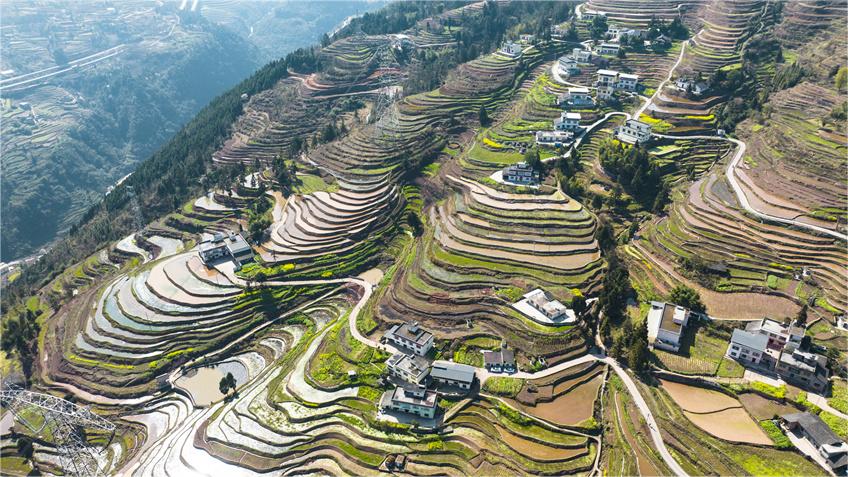China commits to establishing region-specific environmental management system by 2025

An aerial drone photo shows a view of Guangyang Isle in southwest China's Chongqing, March 16, 2024. Guangyang Isle, the most extensive green island in the upper reaches of the Yangtze River, has been turned into an ecological restoration and protection "classroom" for ecotourists and school children. The local ecosystem and biodiversity were once seriously threatened due to real-estate projects in the area. However, the local government brought harmful projects of this sort to a halt in 2017, starting the restoration of the environment on the island. (Xinhua/Wang Quanchao)
China recently rolled out guidelines on building a system for region-specific environmental management by 2025. This system establishes comprehensive environmental goals for different regions to meet, while also allowing for flexibility in implementing measures that are tailored to local conditions. Experts believe that this move signifies a shift toward a more nuanced and sophisticated approach to environmental management in China.
The guidelines were jointly issued by the general offices of the Communist Party of China Central Committee and the State Council, the Xinhua News Agency reported on Sunday.
It is important to adopt a region-specific approach to environmental management, and to enforce red lines for the protection of ecosystems, the quality of the environment, and rational resource utilization, according to the guidelines.
By 2025, the system for region-specific environmental management should be established, and the system will be full-fledged and functioning efficiently by 2035, the guidelines noted.
The guidelines include 18 detailed policies covering six aspects, including facilitating high-quality development, ensuring high-level protection of the ecological environment, and strengthening supervision and assessment.
The guidelines call on regions to make their own environmental protection plans, based on the principle of sticking to national guide, obey the coordination from provincial level.
The previous ecological environment management systems were relatively extensive, with a one-size-fits-all approach that did not take into account the differences in development stages and the nature of problems in China, Li Wei, a professor from school of environment, Beijing Normal University, told the Global Times on Monday. Li had participated in making of the region-specific environmental management system.
For example, the system said that under the red lines listed for the protection of ecosystems, areas with high pressure for improving ecological environment quality, as well as high intensity of resource and energy consumption, should identify the areas where development conflicts with protection, and determine the key ecological environment control units.
Li said the new system achieves precision in ecological environment management through the differences in various regions. And unlike the previous environmental protection systems, which focus solely on certain area, the new system also manages to integrate elements such as water, air, soil, and ecology, as well as resources and environment, in a coordinated manner.
The new system also highlights the integration and innovation of new technology, artificial intelligence into environmental protection. It calls for the improvement of online government services and smart decision-making functions, in addition to enhance service efficiency.
In January, The Communist Party of China Central Committee and the State Council have issued guidelines to comprehensively promote the development of a "Beautiful China."
This development must be given prominence in the construction of a strong country and in the process of achieving national rejuvenation, according to the guidelines.
By 2027, China will have seen a continuous decrease in the total discharge of major pollutants and improve the quality of its ecological environment.
By 2035, green methods of production and ways of life will have been developed broadly, carbon emissions will have peaked and be in steady decline, and the country's ecological environment will have improved fundamentally.
Photos
Related Stories
- Advisers diligent in shaping environmental policy
- Experts hail China's role in green mobility at UNEA-6
- In Numbers: China's ecological environment improves steadily in 2023
- China to promote development of over 100 'beautiful bay' construction projects this year
- New study reveals plateau's evapotranspiration changes
- China advances green transition of courier sector
Copyright © 2024 People's Daily Online. All Rights Reserved.









